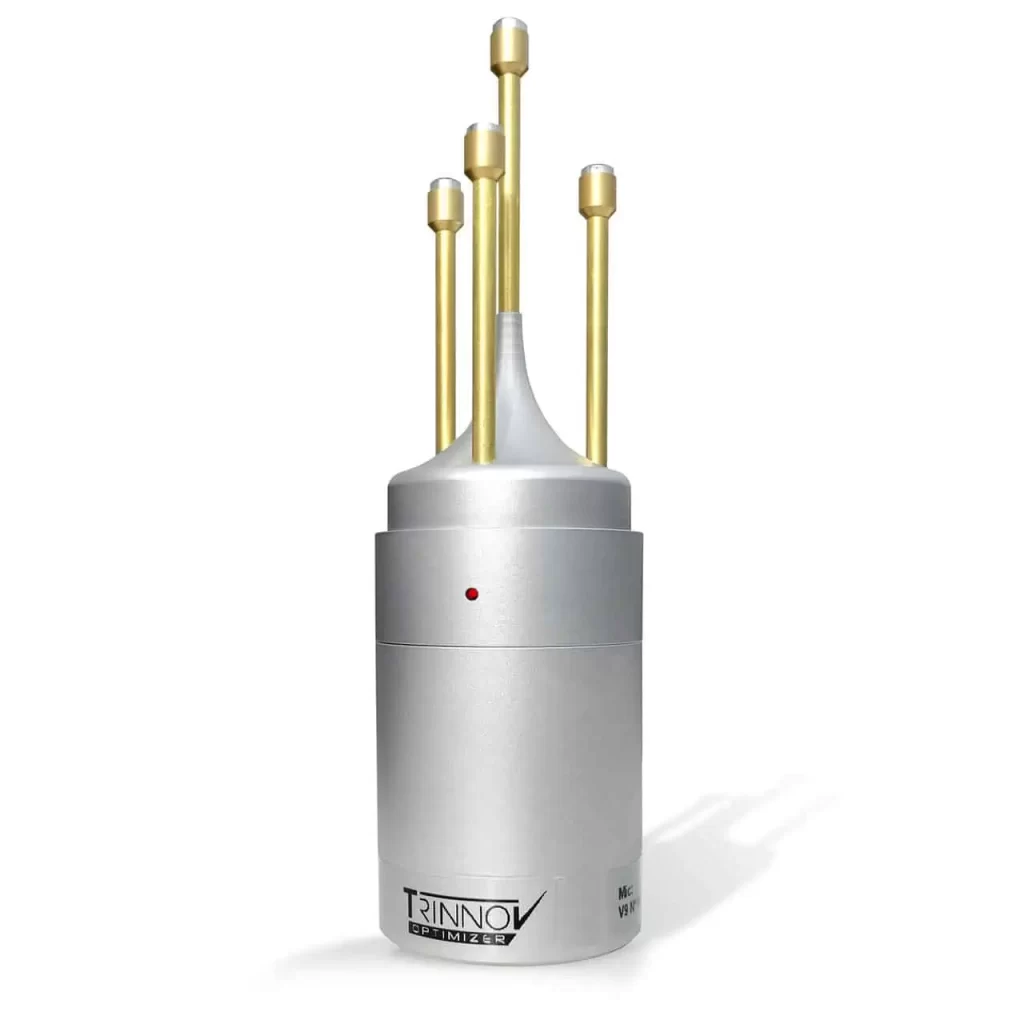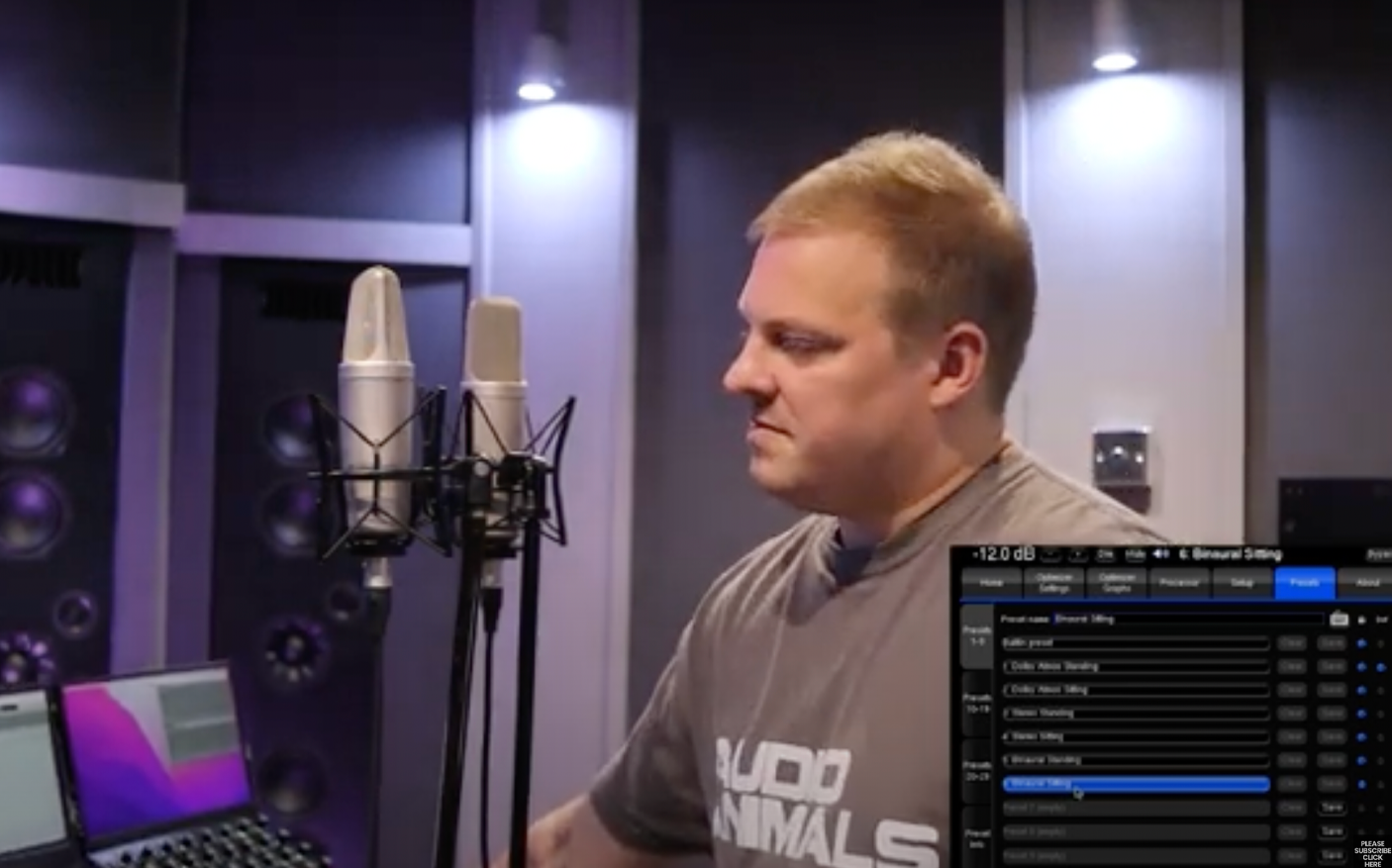In this video you will be able to audibly hear exactly what the Trinnov room correction does and how it corrects the room perfectly. I will bypass each feature of the Trinnov and show you exactly what difference each feature makes with audio demos.


Trinnov Audio MC Pro Multi-Channel Room Correction and Loudspeaker Optimisation System
What is Room Correction and Speaker Optimisation?
The acoustics of a room affects the sound that you hear coming from your speakers which in turn affects the way you manipulate your mix. Traditional methods of acoustic treatment will help to control this but there are still artefacts that cannot be corrected by acoustics alone. Trinnov Audio has developed a range of stereo and surround optimisers using the latest DSP real-time processing that will improve the accuracy of your room through your speaker system.
The room’s problems have been identified, and are taken into account while recording or mixing. But as long as the room’s acoustics are distorting the mix, how will it translate in other rooms?
Trinnov has applied the results of breakthrough research in loudspeaker/room acoustics to create a new generation of loudspeaker processors, setting a new benchmark for accurate sound reproduction. The Trinnov Optimizer® takes mix translation to the next level.
Multichannel Loudspeaker Processor
The Trinnov Audio MC Pro comes in the following variations depending on your needs:
- Up to 16 Analogue & 16 AES
- MADI, AES67 and DANTE models up to 64 I/O
- Supports all formats, from stereo to 64 channels
- Biamp / triamp / quadriamp operation
- 2U Rackmount
The Optimizer® is a full-featured loudspeaker processor that complies with and goes beyond current audio reproduction standards. Trinnov combines automatic algorithms with flexible fine-tuning tools that allow the sound system designer to reach the best results while making the whole process easier and faster.
Acoustic Analysis
The Optimizer® is installed in the monitoring signal path just before the amp. Measurements are made with the unique 3D microphone and sound impulses are generated by the Optimizer® and processed.
Once measurements are made, the Optimizer® only takes a few seconds to compute the automatic compensation, no matter how complex the system layout is.
Far from the old-fashioned real-time analysis and 1/3rd octave correction methods, the Optimizer® uses a smart combination of modern techniques to generate complex sets of digital filters and achieve the best loudspeaker/room compensation possible. While the room and the loudspeakers need to be analysed and eventually treated separately by most technologies on the market, the Optimizer® considers and addresses every aspect of the reproduction system in its acoustic environment at the same time. Problems are identified, cross-analysed and compensated with the most efficient and best-sounding compromise.
Correction of Early Reflections (Direct Field):
The Optimizer® analyses the measurements in the time-frequency domain to identify early reflections, depending on their amplitude, frequency, direction and arrival time. After this process, each loudspeaker’s response is “clean” from early reflections.
Correction of the Room Energy
In this second stage the Optimizer® analyses the measurements in the frequency domain only (the response of the system in steady-state).
Compensation of Resonance Modes (in the low range): the Optimizer® identifies resonance modes in the range where they can be clearly differentiated, roughly up to 300Hz. It applies individual filters to compensate for each resonance mode.
Smoothing of the reverberation (in the mid and high range): The Optimizer® analyses the room’s frequency response, related to the colouration of the room’s reverberation. Another filter is applied to smoothly compensate for this colouration.
Trinnov Optimizer®: what’s new in V3.0
Multi Point Measurements: measure multiple points in your room, using one or more microphones. The Optimizer® Multi-Point algorithms consider every point according to the weights you specify.
New Graphs: compare multiple loudspeakers or measurement points on the same graphs. Analyse impulse responses, group delay, and the filters generated by the Optimizer®.
Modular Architecture: choose the features you need. The Optimizer® Runtime allows you to use the Optimizer® as a “black box”. The Optimizer® Toolbox includes all the measurement and analysis functionality to calibrate your loudspeakers.

